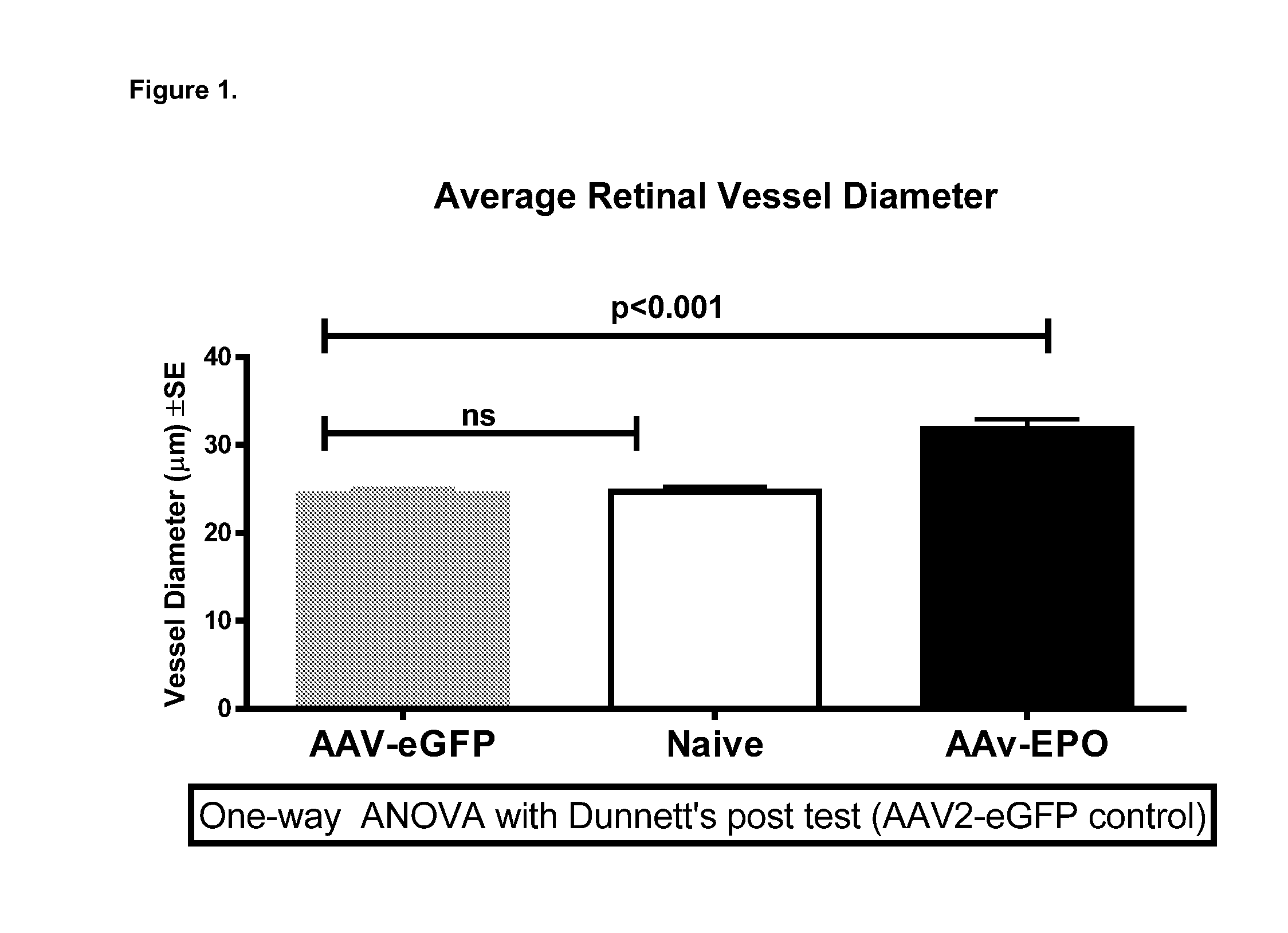Compositions and methods for antibodies targeting epo
a technology applied in the field of compositions and methods of antibodies targeting epo, can solve the problems of ozurdex treated eyes developing increased intra-ocular pressure, vision loss, and risk of glaucoma, and achieve the effect of reducing antigenicity
- Summary
- Abstract
- Description
- Claims
- Application Information
AI Technical Summary
Benefits of technology
Problems solved by technology
Method used
Image
Examples
example 1
Generation of Affinity Matured Epo Antibodies
[0264]A fully human phage display library was used to generate the Epo binding antibodies described herein. Biotinylated and non-biotinylated human and cynomolgus Epo were used in solution and solid phase pannings. Standard panning were performed as well as RapMAT approaches (Prassler et al., (2009) Immunotherapy 1(4):571-583). Following secondary screening and RapMAT panning, clones were selected for sequence analysis and a set of 8 antibodies were selected for conversion to a FabCys format, germlining, pl optimization and removal of deamidation sites. FabCys generation was accomplished with a proprietary RapCLONE®method. RapCLONE® was performed as a two-step method for convenient and efficient conversion of a large amount of Fab clones into the IgG and FabCys format. In a first cloning step, a eukaryotic expression cassette was introduced into the expression vectors pMORPH®×11 (for HuCAL PLATINUM®) via BsiWI / Mfel (for κ pools) or Hpal / M...
example 2
Characterization of Optimized Antibodies
[0268]The following example describes methods that may be used to measure antibody affinity. These and other methods of measuring binding affinity are known in the art.
Affinity Determination
[0269]Antibody affinity for Epo was measured by surface plasmon resonance (SPR) using a Biacore® T200 (Biacore) and solution equilibrium titration (SET). Explanations of each technology and corresponding mean results for Epo binding are described below. Modelling assumptions take into account concentrations of Epo in the system, kinetics of Epo biosynthesis and half-life, as well as the desired dosing schedule, and suggest that a Fab with an affinity of less than 50 pM for Epo is sufficient to lower levels of free Epo.
Biacore Determination
[0270]The kinetics of an interaction, i.e. the rates of complex formation (ka) and dissociation (kd), can be determined from the information in a sensorgram. If binding occurs as sample passes over a prepared sensor surfac...
example 3
Inhibition of Epo Induced Cell Proliferation
[0300]Cells which are dependent on erythropoietin for growth and survival can be utilized to measure the potency of anti-Epo therapeutics by means of Epo-dependent proliferation inhibition (Chiba et al., 1991).
PUM
 Login to View More
Login to View More Abstract
Description
Claims
Application Information
 Login to View More
Login to View More - R&D
- Intellectual Property
- Life Sciences
- Materials
- Tech Scout
- Unparalleled Data Quality
- Higher Quality Content
- 60% Fewer Hallucinations
Browse by: Latest US Patents, China's latest patents, Technical Efficacy Thesaurus, Application Domain, Technology Topic, Popular Technical Reports.
© 2025 PatSnap. All rights reserved.Legal|Privacy policy|Modern Slavery Act Transparency Statement|Sitemap|About US| Contact US: help@patsnap.com



